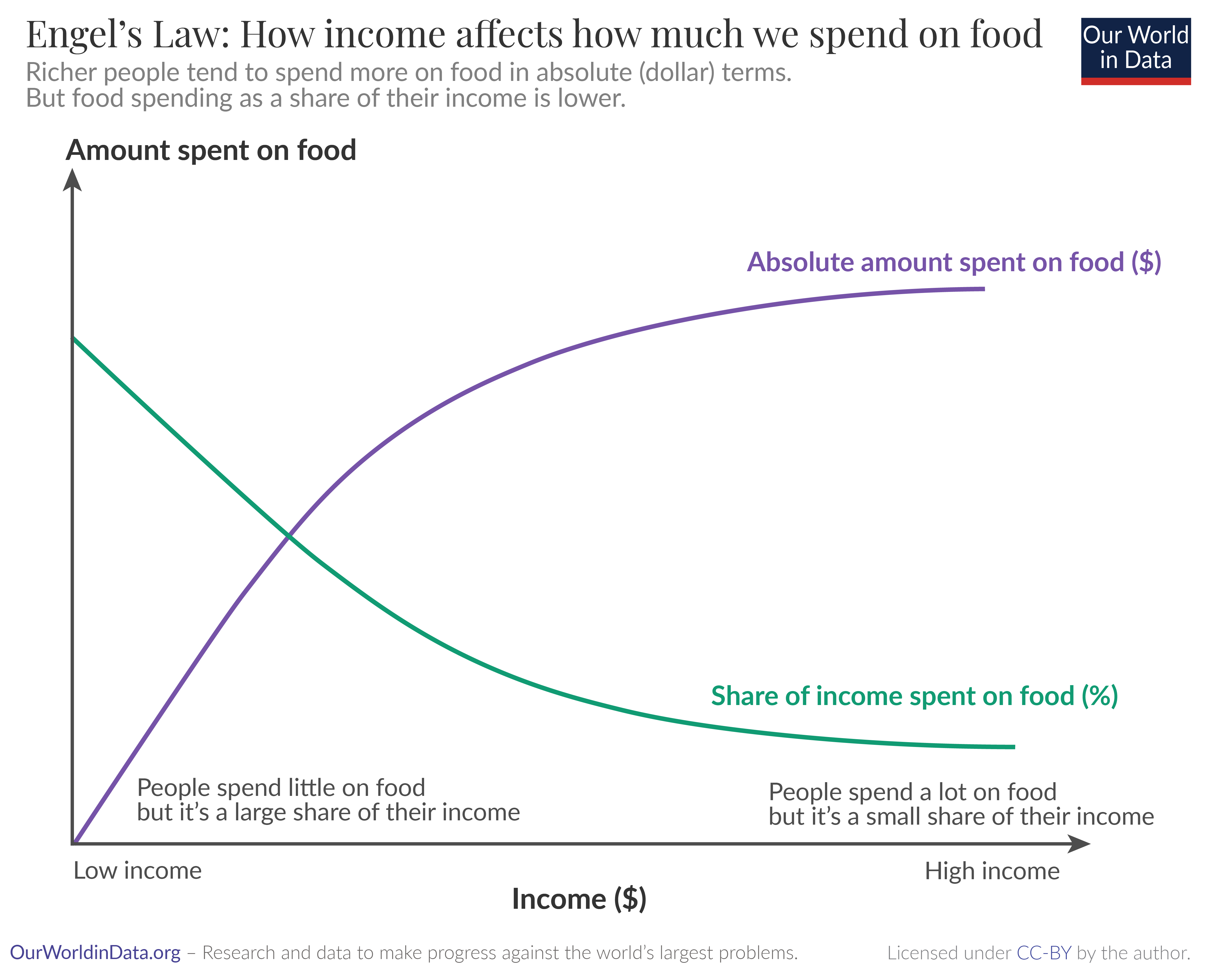Understanding The Engel Coefficient: Measuring Household Expenditure Patterns
Editor's Notes: Understanding The Engel Coefficient: Measuring Household Expenditure Patterns have published today date. We explain our effort doing some analysis, digging information, made Understanding The Engel Coefficient: Measuring Household Expenditure Patterns we put together this Understanding The Engel Coefficient: Measuring Household Expenditure Patterns guide to help target audience make the right decision.
Key differences or Key takeways:
Transition to main article topics
FAQ
Understanding The Engel Coefficient: Measuring Household Expenditure Patterns is a statistical measure that analyzes the relationship between a household’s income and its expenditure on various goods and services. It helps economists and policymakers understand how households allocate their resources and how their spending patterns change as their income levels rise or fall.
DOS | SingStat Website - HES 2022/23 - Source www.singstat.gov.sg
Question 1: What is the Engel coefficient and how is it calculated?
The Engel coefficient is calculated by dividing a household's total expenditure on food by its total consumer expenditure. It represents the percentage of a household's budget that is spent on food items, which can vary significantly across households and regions.
Question 2: How does the Engel coefficient help analyze household expenditure patterns?
The Engel coefficient provides insights into the spending habits and economic well-being of households. It helps identify households that spend a disproportionate amount of their income on food, which may indicate poverty or food insecurity. It also helps track changes in household expenditure patterns over time, reflecting economic fluctuations or policy interventions.
Question 3: What are the limitations of the Engel coefficient?
While the Engel coefficient is a useful tool, it has certain limitations. It only measures food expenditure, excluding other essential expenses such as housing, transportation, and healthcare. Additionally, it does not consider the quality or nutritional value of food consumed, which can vary significantly within the same expenditure category.
Question 4: How is the Engel coefficient used in policymaking?
The Engel coefficient plays a crucial role in policymaking. It helps identify vulnerable households and target interventions to address food insecurity and poverty. Governments use it to design social welfare programs, subsidies, and tax policies that support low-income households and promote equitable resource allocation.
Question 5: How does the Engel coefficient relate to economic development?
As economies develop, the Engel coefficient tends to decline. This is because households shift their spending patterns away from basic necessities like food towards other categories such as education, healthcare, and leisure activities. The Engel coefficient can thus serve as an indicator of economic progress and improved living standards.
Question 6: What are alternative measures to the Engel coefficient?
While the Engel coefficient is widely used, researchers and policymakers also consider other measures to analyze household expenditure patterns. These include the Gini coefficient, which measures income inequality, and the Theil index, which quantifies overall economic inequality. By using multiple measures, policymakers can gain a more comprehensive understanding of household spending and economic conditions.
Summary: The Engel coefficient is a valuable tool for analyzing household expenditure patterns, providing insights into economic well-being and resource allocation. It helps policymakers identify vulnerable households and design targeted interventions to promote equitable resource distribution and improve living standards.
Transition to the next article section: To delve deeper into the topic, you may explore our comprehensive article on Understanding The Engel Coefficient: Measuring Household Expenditure Patterns.
Tips
Delve into the intricacies of household spending patterns by harnessing the Engel Coefficient, a valuable tool for economists and policymakers. This guide presents crucial tips to help you efficiently grasp and utilize this metric.

Understanding and Measuring Impact - Source www.wifor.com
Tip 1: Understand the Basics
The Engel Coefficient quantifies the proportion of household income allocated to food consumption. It reveals the relationship between income and expenditure, highlighting the impact of economic factors on dietary choices.
Tip 2: Interpret Trends
As income levels rise, the Engel Coefficient typically decreases. This change reflects the shifting priorities of households, with a greater emphasis on non-food items like housing, education, and entertainment.
Tip 3: Identify Vulnerable Populations
High Engel Coefficients can indicate economic vulnerability. Households that spend a significant portion of their income on food have limited resources for other essential goods and services, making them more susceptible to poverty.
Tip 4: Monitor Economic Conditions
The Engel Coefficient can serve as an indicator of economic conditions. Declining coefficients during economic downturns may signal reduced purchasing power, while rising coefficients during periods of growth can reflect improved living standards.
Tip 5: Set Policy Priorities
Policymakers can utilize the Engel Coefficient to identify areas requiring intervention. High coefficients may necessitate programs that provide food assistance or subsidies, while low coefficients could warrant initiatives to promote healthy eating habits.
Summary
By comprehending the Engel Coefficient and its applications, you gain a powerful tool for analyzing household expenditure patterns, identifying economic vulnerabilities, and informing policy decisions. Harness these tips to unlock the full potential of this metric.
Understanding The Engel Coefficient: Measuring Household Expenditure Patterns
The Engel coefficient is a statistical measure used to analyze the relationship between household income and expenditure. It is crucial for comprehending consumption patterns, economic development, and social welfare.
- Income-expenditure Ratio: It measures the proportion of household income spent on consumption.
- Absolute Necessity: Households allocate a significant portion of income to basic necessities like food, housing, and clothing.
- Engel's Law: As income rises, the % of expenditure on food decreases while spending on other items increases.
- Economic Development Indicator: Lower Engel coefficients indicate higher economic development, as households have more disposable income.
- Poverty Measurement: High Engel coefficients indicate poverty, as households spend a high % of income on necessities.
- Social Welfare Policy: Policymakers use the Engel coefficient to design programs and policies to address income inequality and improve living standards.

Table 4 from The Issue of Measuring Household Consumption Expenditure - Source www.semanticscholar.org
In conclusion, the Engel coefficient is a valuable tool for understanding household consumption patterns, economic development, and social welfare. By analyzing the income-expenditure ratio, necessity expenditure, and Engel's law, governments and researchers can develop targeted policies to promote economic growth, reduce poverty, and improve the well-being of households.
Understanding The Engel Coefficient: Measuring Household Expenditure Patterns
The Engel coefficient is an economic indicator that measures the percentage of household expenditure devoted to food. It is named after the German statistician Ernst Engel, who developed it in the late 19th century. The Engel coefficient is a useful tool for understanding household expenditure patterns and can be used to track changes in living standards over time.

Engel’s Law: Richer people spend more money on food, but it makes up a - Source ourworldindata.org
The Engel coefficient is calculated by dividing the household's food expenditure by its total expenditure. The resulting figure is expressed as a percentage. A high Engel coefficient indicates that a household is spending a large proportion of its income on food, which is typically associated with low living standards. Conversely, a low Engel coefficient indicates that a household is spending a small proportion of its income on food.
The Engel coefficient is a useful tool for understanding household expenditure patterns and can be used to track changes in living standards over time. For example, a study by the World Bank found that the Engel coefficient in developing countries has declined significantly over the past few decades. This decline is due to a number of factors, including rising incomes, urbanization, and changes in dietary patterns.
| Engel Coefficient Range | Living Standard |
|---|---|
| 0-20% | High |
| 20-30% | Medium |
| 30-40% | Low |
| 40%+ | Very Low |
The Engel coefficient can also be used to compare the living standards of different countries. For example, a study by the United Nations found that the Engel coefficient is higher in developing countries than in developed countries. This is because developing countries have lower incomes and a greater proportion of their population lives in poverty.
The Engel coefficient is a useful tool for understanding household expenditure patterns and can be used to track changes in living standards over time. It is also a useful tool for comparing the living standards of different countries.
